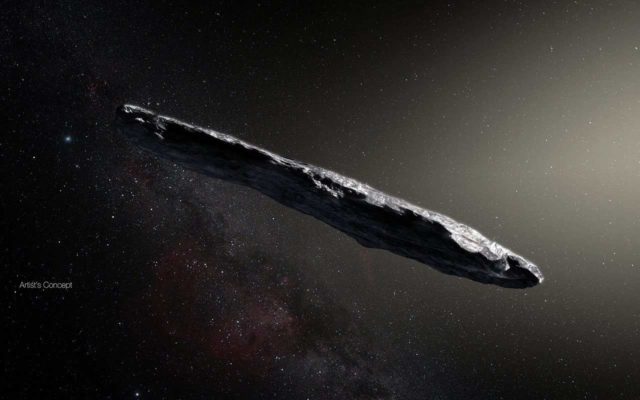
Harvard researchers discover first known interstellar meteor that hit Earth back in 2014 This artist’s impression shows the first interstellar asteroid: `Oumuamua. (NASA/Released)
One meteor has traveled a long way to come to Earth.
Researchers have discovered the first known interstellar meteor to ever hit our planet, according to a recently released United States Space Command document.
An interstellar meteor is a celestial object in our solar system that originated from another solar system, NASA said. This is said to be a rare occurrence, as it needs to travel an extreme distance.
This meteor is being called CNEOS 2014-01-08, the document included. The meteor also crash-landed along the northeast coast of Papua New Guinea on Jan. 8, 2014, Scientific American said, but was not discovered until years later.
It was identified as an interstellar meteor in a 2019 study co-written by Amir Siraj, who was an undergraduate student at Harvard University at the time, and Abraham Loeb, a professor of science at Harvard, the document said.
In the document, U.S. Space Force Lt. Gen. John E. Shaw said officials reviewed additional data related to Siraj and Loeb’s original finding and were able to confirm “that the velocity estimate reported to NASA is sufficiently accurate to indicate an interstellar trajectory.”
“U.S Space Command can assist the broader community by integrating sensors and data to detect and defend against planetary threats,” Shaw said in reply to the discovery of the meteor.
The study of interstellar meteors can reveal a lot about our solar system and the solar systems beyond. “This new field, certainly has much to tell us about our place in the cosmos. Further investigations of the observed properties of the 2014 meteor could reveal new insights about our local interstellar environment,” Siraj wrote.
You can read more regarding what Siraj said about his findings in a Scientific American article published on Tuesday.
___
© 2022 Advance Local Media LLC Distributed by Tribune Content Agency, LLC




